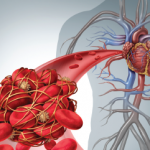New in 2019, pediatric rheumatologists will be able to network in a community lounge, as well as attend the cutting-edge educational sessions specific to the field. Here’s a sneak peek…
Pets May Help Older Adults Manage Chronic Pain
(Reuters Health)—People with pets may be able to use their companion animals to practice techniques for managing chronic pain without medication, researchers say. In focus group interviews, pet owners over age 70 with chronic pain said their pets brought them joy and laughter, helped them relax, kept them active and promoted other good habits that…

An Interdisciplinary & Holistic Approach to Alleviating Pediatric Pain
Interdisciplinary collaboration is proving valuable to address bio-psycho-social pain management in pediatric patients at Children’s Hospital Los Angeles…

Addiction Therapy Is Underprescribed but May Benefit Medical Adherence
CHICAGO—Although medical treatments for addiction have been proved effective, they are not used often enough, said Kenneth Stoller, MD, during a session at the 2019 ACR State-of-the-Art Clinical Symposium, held April 5–7. These treatments bring health benefits that extend beyond addiction, he said. Dr. Stoller, assistant professor of psychiatry and behavioral sciences at Johns Hopkins…

In Wake of Lupus Trial Failure, New Research Attacks From Many Angles
CHICAGO—When Richard Furie, MD, was first asked to speak about lupus at the 2019 ACR State-of-the-Art Clinical Symposium, held April 5–7, organizers suggested he discuss low disease activity and classification criteria. But Dr. Furie, a professor of medicine at the Donald and Barbara Zucker School of Medicine at Hofstra/Northwell, Hempstead, N.Y., and a veteran investigator…

Risk Assessment & Treatment in Antiphospholipid Syndrome Patients
CHICAGO—Choosing a treatment for antiphospholipid syndrome (APS) involves an array of factors, from the antibodies present to their titers to other risk factors, said Lisa Sammaritano, MD, during a guided tour of APS treatment at the 2019 ACR State-of-the-Art Clinical Symposium, held April 5–7. Dr. Sammaritano, associate attending physician at the Hospital for Special Surgery,…

The Microbiome: A Predictor of Autoimmune Response?
CHICAGO—The world of rheumatology is beginning to harness the promise of the microbiome, with evidence showing components of the gut may help predict response to medication and may be manipulated to improve how well a treatment works, said Jose Scher, MD, at the 2019 ACR State-of-the-Art Clinical Symposium, held April 5–7. “We can truly exploit…

Expert Says Vaccines Are Largely Safe for Rheumatology Patients
CHICAGO—Rheumatologists often come to Brian Schwartz, MD, associate professor of medicine and vice chief for clinical affairs in the Division of Infectious Diseases, University of California, San Francisco, with a concern: A patient on immunosuppression has a family member who needs a live vaccine, but the patient may be vulnerable to the vaccine’s effects. Should…

The Type I Interferon Pathway’s Influence in Connective Tissue Disease
Type I interferon appears to play a role in disease susceptibility and pathogenesis in several classic connective tissue diseases, at least in some patients. Below, I present evidence supporting this connection, explore potential missing links in pathogenesis and discuss biological treatments that target the pathway. The Type I Interferon Pathway Interferons are a class of…

The Prevalence, Incidence, Mortality & Costs of RA-Related ILD
Interstitial lung disease (ILD) can be associated with rheumatoid arthritis (RA) with significant morbidity and mortality. An article in The Journal of Rheumatology focused on calculating the prevalence, incidence, mortality and costs to the healthcare system of RA-related ILD (RA-ILD).1 “RA is the most common of connective tissue diseases encountered by rheumatologists—affecting about 1% of…
- « Previous Page
- 1
- …
- 111
- 112
- 113
- 114
- 115
- …
- 336
- Next Page »